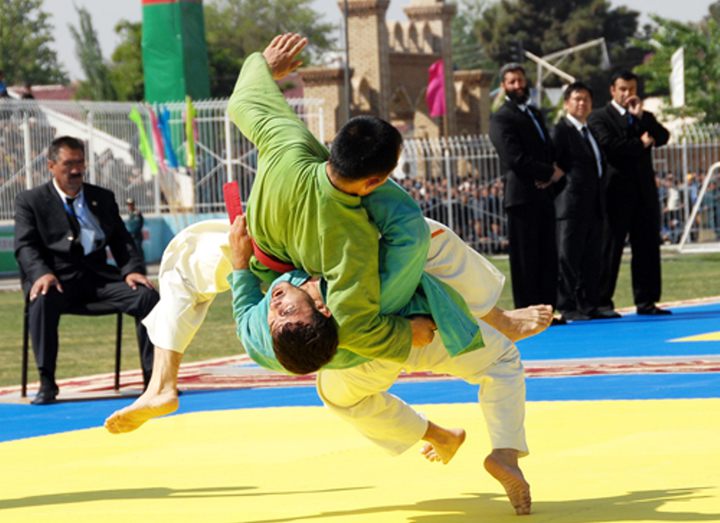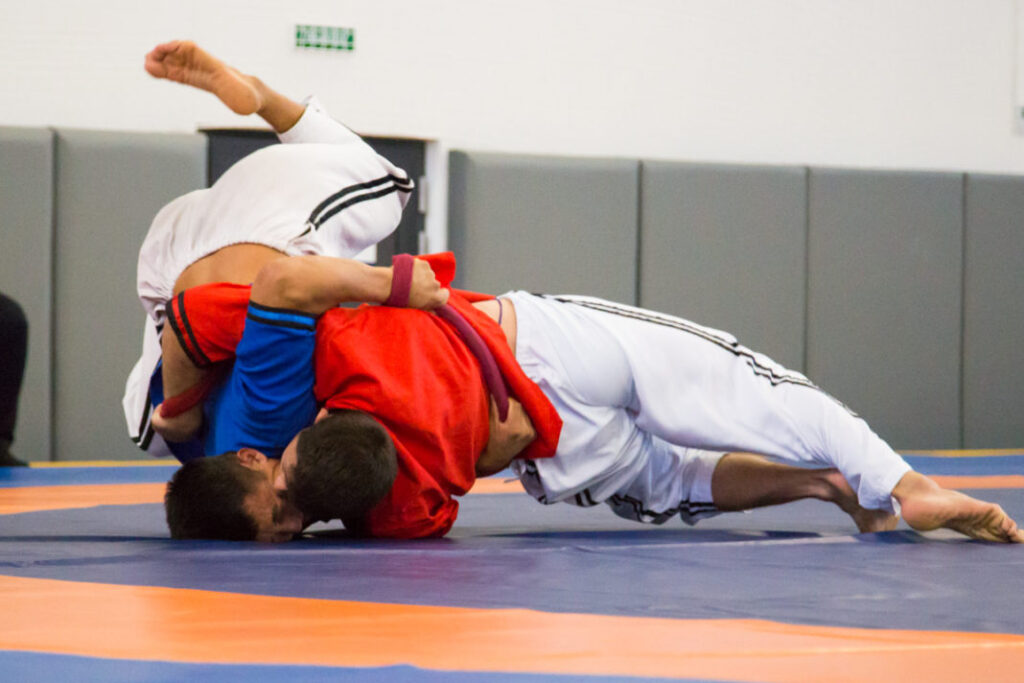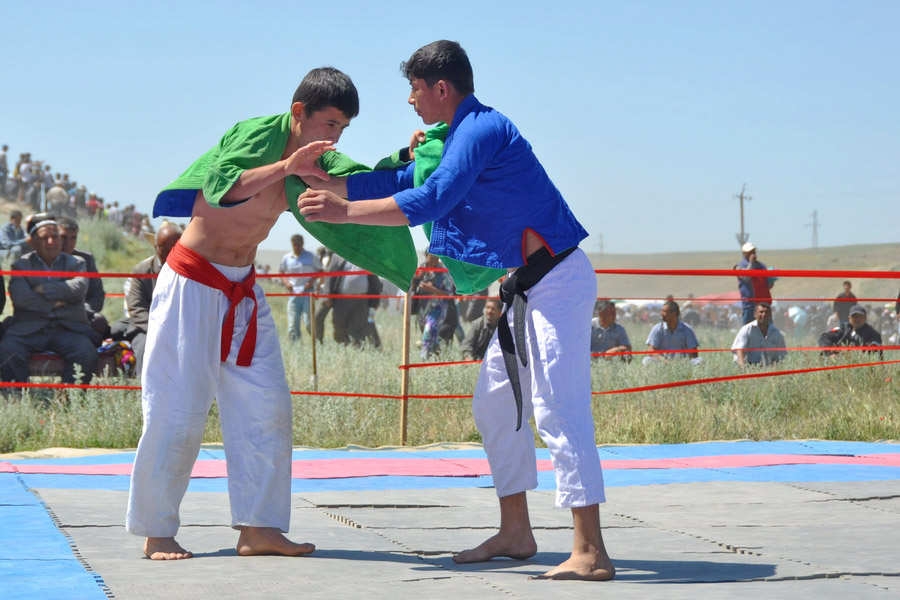Uzbek Kurash
The Uzbek kurash is one of the most ancient types of traditional wrestling in the world and, probably, the most popular amusement in Uzbekistan. There is no holiday in Uzbekistan that goes without kurash. This sport does not require a special ground or a gymnasium. In the former times people were wrestling on the ground, sometimes covered with carpets. The rules are simple and democratic. Kurash is acceptable to both the young and the old. Holidays often feature wrestling with the participation of grey-bearded old men.

Kurash requires much strength and stamina and is not characterised by complex technique and tactics. Wrestling in a recumbent position is prohibited in kurash. The contestants may wrestle only when on their feet, and are only allowed to throw or trip the opponent. Any blows, painful grip or stranglehold, as well as catching below the waist, are explicitly forbidden. All this makes kurash a simple, clear, spectacular, dynamic and safe sport. .
In the 14th century Tamerlane used kurash as a part of a training programme for his soldiers. As is well-known, Tamerlane’s army conquered half of the world and was never defeated. Centuries afterwards kurash has become one of the favourite and esteemed traditions among the peoples populating the territory of contemporary Uzbekistan. The Uzbeks say that they have kurash in their genes, in their blood. Today there are about two million people in Uzbekistan going in for this sport.
History of kurash
Mentions of Kurash can be found in many ancient papers. The Uzbek national wrestling “kurash” has a bright, interesting history. In ancient eastern sources kurash is referred to a spectacular single combat. The famous Hungarian scholar L. Kun noted that kurash had its own ancient history.
In the permanent places of residence of the ancient man, along with scenes of hunting, images of struggling people began to appear. In particular, images of a fighter with high technique were found on wall drawings of Egyptian pyramids. A bronze statuette, made around the ХХVIII century BC, is the oldest monument of “belbogli kurash” (a kind of kurash in which wrestlers compete holding each other’s belts)
Several historical sources and archaeological sites confirm that in our region kurash has been practiced since ancient times. The well-known archeologist S.P. Tolstov in his archaeological research, conducted in Janbaskala (Khorezm), determined that in the IV century BC among the tribal communities, kurash was widely spread. It was during this research when the statuettes of competing wrestlers were found. In the monument of Koikyrylgankala a riton with a depiction of kurash wrestling dating back to the 4th-3rd centuries BC was found. Tolstov asserts that our ancestors conducted kurash competitions during various festivities, especially on the day of Navruz.
In such invaluable examples of oral folk creativity of the Uzbek people, like epics “Alpamysh”, “Gogogly”, “Tulganoy”, wrestlers, their strength and courage were glorified. In the epic “Alpamysh” the competitions of Uzbek wrestlers, their technique, dexterity are very brightly illustrated.
In the 10th century the kurash technique was improved. In ancient Chinese source “Tan-shu” it was noted that Ferghana residents who went on festivities dedicated to the holiday “Navruz” shared in two groups and began to compete in kurash.The great scholar Abu Ali ibn Sino (980-1037), speaking of kurash, noted: “Kurash differed in species. One of its species was belbogli kurash, according to the rules of which the wrestlers had each other for the belt. In any case, they did not release their hands from the opponent’s belt and fought to victory.” The great commander Amir Timur, in order to increase the physical strength of his soldiers, taught them to use various methods of kurash. Thus, kurash acquired a mass significance.
Ages passed, and Uzbek kurash became one of the most loved and honored traditions among the peoples. To date, there are more than two million kurash wrestlers throughout Uzbekistan.
Rules of kurash
In kurash fighting in the supine position is banned. It is possible to fight only in the rack. All this makes Uzbek kurash a simple, understandable, gripping, dynamic and harmless kind of sport.
All throws made in the rack, the judges judge. If the rivals’ scores are the same, the victory is awarded based on the last award. If the participant received both an evaluation and punishment, an advantage is given to the evaluation.
Kurash is an extremely spectacular sport. For passivity a wrestler is severely punished. If within 25 seconds the wrestler does not attempt to hold a reception, the judge announces a warning to him. Three warnings mean a loss.
The appearance of kurash on the world stage as an international sport has further increased the interest in this sport from authoritative sports organizations and countries of the world community.
Probably, there is no man who at least once did not try his hand at the national struggle – kurash in Uzbekistan. Regularly about 2 million people are occupied by the kind of sport in the republic.
Uzbek wrestling attracts people primarily because it is devoid of any aggression. This art is not to maim and kill, but to rejoice in the beauty and perfection of movements.


